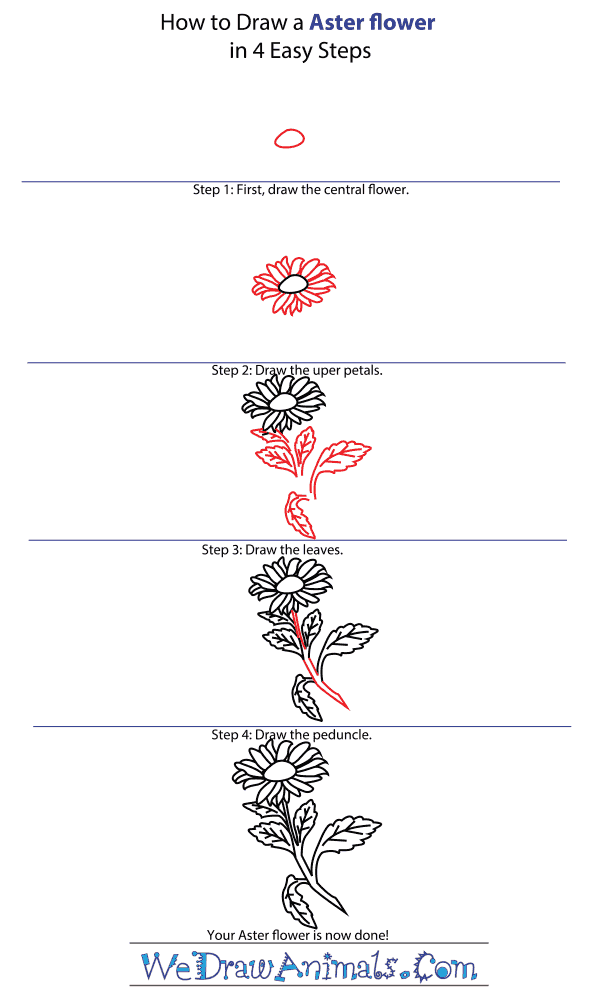In this quick tutorial you'll learn how to draw an Aster Flower in 4 easy steps - great for kids and novice artists.
The images above represents how your finished drawing is going to look and the steps involved.
Below are the individual steps - you can click on each one for a High Resolution printable PDF version.
At the bottom you can read some interesting facts about the Aster Flower.
Make sure you also check out any of the hundreds of drawing tutorials grouped by category.
How to Draw an Aster Flower - Step-by-Step Tutorial
Step 1: The first step is to draw the center of the flower by making a circle.
Step 2: Then draw the petals which are skinny and sometimes overlapping eachother all the way around the center.
Step 3: Next draw five leaves below the flower. Each leaf should be slightly oval with jagged outlines.
Step 4: In this last step draw the stem starting at the bottom of the flower and draw down inbetween the leaves to connect flowers and leaves.
Interesting Facts about Asters
Asters are flowers that look a lot like daises. They have a yellow middle that is really a cluster of smaller flowers. Their petals circle around the yellow center and are thin and pointy. Asters grow in the fall and like to be in full sun. They grow in Africa, Asia, the Americas, and Europe. Asters grow low to the ground and really don’t have many problems with fungus or bugs. They can grow 8 inches to 8 feet tall and bloom in white, blue, pink, lavender, and dark red. Asters grow more like bushes with thick green leaves and a sprinkling of flowers all over it.
Did you know?
- There are 2,300 species in this flower’s family.
- Asters are great flowers for butterfly gardens.
- There are 600 varieties of Aster.
- People use to burn asters to keep snakes away.
- Was used in folk medicine for headaches and colds.
- Asters are given as tokens of love.
Activity: Plant a butterfly garden with you kids. Asters are great choice for autumn attraction. But so are Butterfly Weed, Black-eyed Susans, daylilies, and golden rod. All sorts of winged insects will stop by if you offer a variety of plants.





